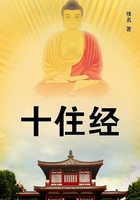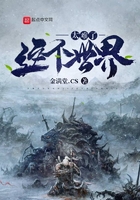His work on climbing plants was his first sustained piece of work on the physiology of movement, and he remarks in 1864: "This has been new sort of work for me." ("Life and Letters", III. page 315. He had, however, made a beginning on the movements of Drosera.) He goes on to remark with something of surprise, "I have been pleased to find what a capital guide for observations a full conviction of the change of species is."It was this point of view that enabled him to develop a broad conception of the power of climbing as an adaptation by means of which plants are enabled to reach the light. Instead of being compelled to construct a stem of sufficient strength to stand alone, they succeed in the struggle by making use of other plants as supports. He showed that the great class of tendril- and root-climbers which do not depend on twining round a pole, like a scarlet-runner, but on attaching themselves as they grow upwards, effect an economy. Thus a Phaseolus has to manufacture a stem three feet in length to reach a height of two feet above the ground, whereas a pea "which had ascended to the same height by the aid of its tendrils, was but little longer than the height reached." ("Climbing Plants" (2nd edition 1875), page 193.)Thus he was led on to the belief that TWINING is the more ancient form of climbing, and that tendril-climbers have been developed from twiners. In accordance with this view we find LEAF-CLIMBERS, which may be looked on as incipient tendril-bearers, occurring in the same genera with simple twiners. (Loc. cit. page 195.) He called attention to the case of Maurandia semperflorens in which the young flower-stalks revolve spontaneously and are sensitive to a touch, but neither of these qualities is of any perceptible value to the species. This forced him to believe that in other young plants the rudiments of the faculty needed for twining would be found--a prophecy which he made good in his "Power of Movement"many years later.
In "Climbing Plants" he did little more than point out the remarkable fact that the habit of climbing is widely scattered through the vegetable kingdom. Thus climbers are to be found in 35 out of the 59 Phanerogamic Alliances of Lindley, so that "the conclusion is forced on our minds that the capacity of revolving (If a twining plant, e.g. a hop, is observed before it has begun to ascend a pole, it will be noticed that, owing to the curvature of the stem, the tip is not vertical but hangs over in a roughly horizontal position. If such a shoot is watched it will be found that if, for instance, it points to the north at a given hour, it will be found after a short interval pointing north-east, then east, and after about two hours it will once more be looking northward. The curvature of the stem depends on one side growing quicker than the opposite side, and the revolving movement, i.e. circumnutation, depends on the region of quickest growth creeping gradually round the stem from south through west to south again. Other plants, e.g. Phaseolus, revolve in the opposite direction.), on which most climbers depend, is inherent, though undeveloped, in almost every plant in the vegetable kingdom." ("Climbing Plants", page 205.)In the "Origin" (Edition I. page 427, Edition VI. page 374.) Darwin speaks of the "apparent paradox, that the very same characters are analogical when one class or order is compared with another, but give true affinities when the members of the same class or order are compared one with another." In this way we might perhaps say that the climbing of an ivy and a hop are analogical; the resemblance depending on the adaptive result rather than on community of blood; whereas the relation between a leaf-climber and a true tendril-bearer reveals descent. This particular resemblance was one in which my father took especial delight. He has described an interesting case occurring in the Fumariaceae. ("Climbing Plants", page 195.) "The terminal leaflets of the leaf-climbing Fumaria officinalis are not smaller than the other leaflets; those of the leaf-climbing Adlumia cirrhosa are greatly reduced; those of Corydalis claviculata (a plant which may be indifferently called a leaf-climber or a tendril-bearer) are either reduced to microscopical dimensions or have their blades wholly aborted, so that this plant is actually in a state of transition; and finally in the Dicentra the tendrils are perfectly characterized."It is a remarkable fact that the quality which, broadly speaking, forms the basis of the climbing habit (namely revolving nutation, otherwise known as circumnutation) subserves two distinct ends. One of these is the finding of a support, and this is common to twiners and tendrils. Here the value ends as far as tendril-climbers are concerned, but in twiners Darwin believed that the act of climbing round a support is a continuation of the revolving movement (circumnutation). If we imagine a man swinging a rope round his head and if we suppose the rope to strike a vertical post, the free end will twine round it. This may serve as a rough model of twining as explained in the "Movements and Habits of Climbing Plants". It is on these points--the nature of revolving nutation and the mechanism of twining--that modern physiologists differ from Darwin. (See the discussion in Pfeffer's "The Physiology of Plants" Eng. Tr. (Oxford, 1906), III. page 34, where the literature is given. Also Jost, "Vorlesungen uber Pflanzenphysiologie", page 562, Jena, 1904.)Their criticism originated in observations made on a revolving shoot which is removed from the action of gravity by keeping the plant slowly rotating about a horizontal axis by means of the instrument known as a klinostat.













